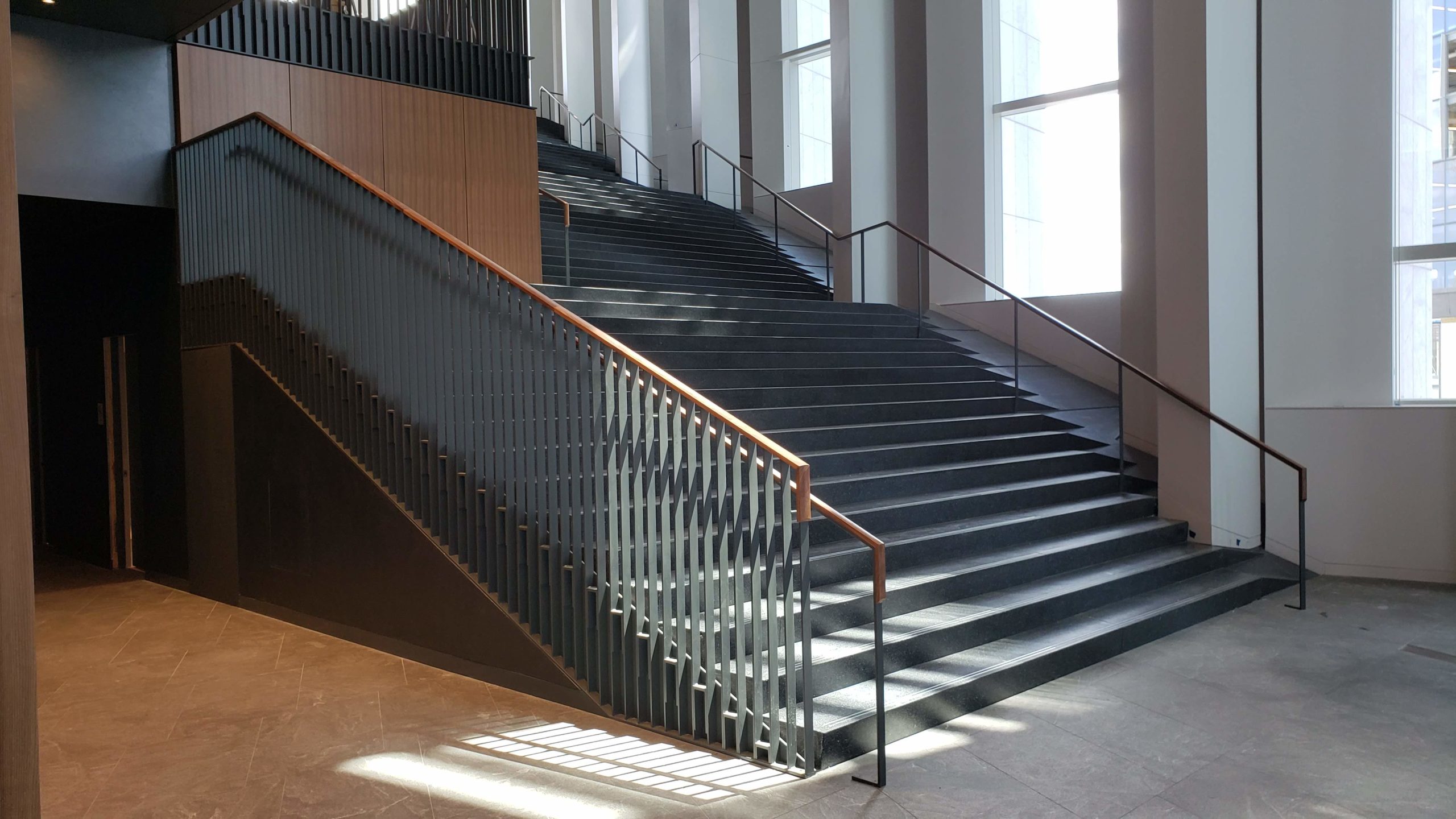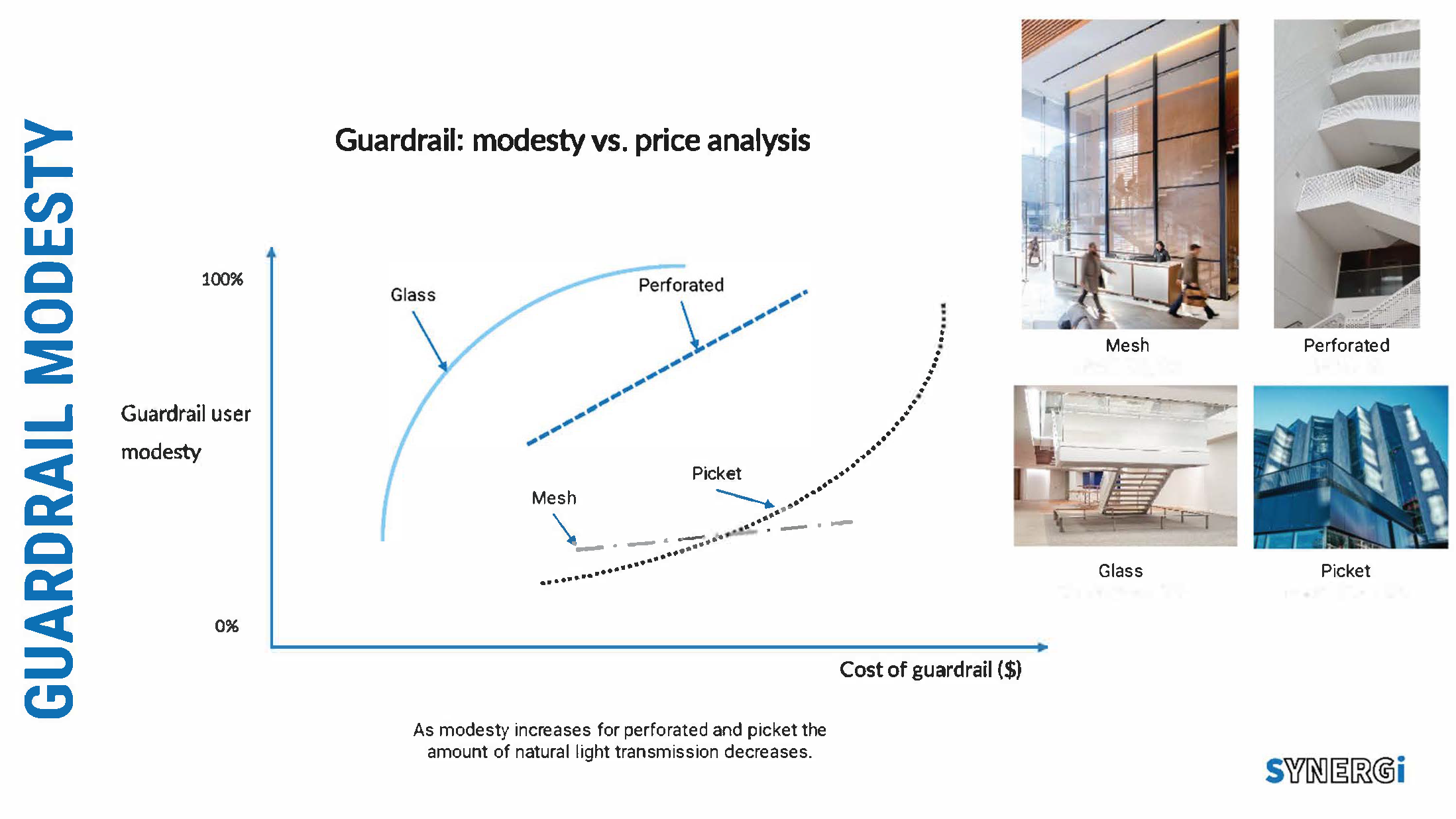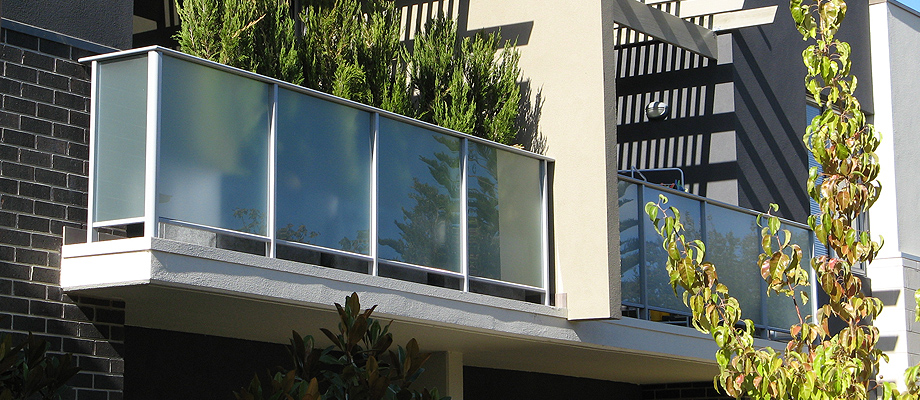Architectural
Stair Modesty: Techniques to Protect Privacy While Adhering to an Open Design Intent
There are many factors to consider when designing a feature stair for an open environment. One consideration that must not be overlooked is the privacy of those choosing to take the stairs. With the following options in mind, feature stairs can be designed to protect the modesty of stair users while adhering to an open design intent.

Feature stair designs with glass treads, glass guardrails, and open risers are increasingly used by designers to allow spaces to maintain an open feeling with ample natural light. However, these features may jeopardize the privacy of those who use them, creating dissatisfaction amongst users and building owners alike. By considering stair modesty in the early design phase, stairs that protect the privacy of users can be created while still adhering to an open design concept.
While current stair trends feature open guardrails and risers, these elements can be incorporated in a way that promotes modesty without compromising the open design intent or creating a cluttered feel. Guardrails can serve a twofold purpose of being a safety item at a stair while also giving users the comfort of knowing their privacy is maintained. Opaque glass guardrails can be used to maintain modesty while still allowing natural light to pass through, and opaque glass risers can create the illusion of openness while preventing others from seeing through them.
Four materials stand out as potential modesty solutions, each with its own unique characteristics – glass, perforated metal, mesh, and picket. Each material can be fabricated in a way that balances modesty, price point, and natural light transmission. It must be noted, however, that in most cases as the modesty of a material increases, so does the price point – and conversely the light transmission can diminish.
Glass
Glass elements including guardrails, risers, and even treads, can be treated to attain optimal translucence, allowing maximum light filtering while obscuring the view of those looking through it. By frosting or acid etching clear glass, it becomes translucent and thus obscures the view of stair users. Patterned and frosted interlayers are also an option to increase modesty. Vinyl film adhesives are also an inexpensive way of increasing the opacity of glass. Glass guardrails are generally the most budget friendly solution for stair modesty, and modesty levels of 100% are possible.
Perforated
Perforated guardrails can achieve a unique look and allow natural light to pass through – all while protecting the privacy of stair takers. Though slightly more expensive than glass, perforated materials can achieve high levels of modesty. Higher levels of modesty can be achieved by adding fewer perforations to the metal guardrails, which subsequently lowers the amount of natural light submission they allow.
Picket
Picket can achieve a wide range of modesty, from low levels with plenty of natural light transmission to levels approaching 100% with significantly lower natural light transmission, all depending on the angle at which it is viewed. Along with perforated guardrails, picket configurations lend themselves to a unique industrial look which may be desirable for certain projects.

An example of how angled picket guardrail that achieves a range of modesty from 0% to 100% depending on viewer angle
Mesh
Wire mesh guardrail can be finished in a variety of finishes to enhance the look of the stair while providing modesty for users. It has a relatively low ceiling as far as the levels of modesty it can provide and should be used in conjunction with other techniques to enhance privacy.

Materiality for specific options can be analyzed using a cost vs. modesty graph per above to make informed decisions
Other Options
Additionally, efforts can be taken to repurpose the vantage point beneath a stair to reduce instances where passersby have a direct view of stair users. Open stairs should be positioned to minimize foot traffic beneath them, and natural obstacles such as fountains or potted plants can organically redirect walkers to points where they will not have a direct view beneath the stair.
Failure to design stairs which prioritize privacy may lead to displeasure among building owners – and possible public outcry. Constructed in 2011, the Franklin County Common Pleas Court House, a $105 million project, featured a floating stair with transparent glass risers in the center of its atrium with a walkway underneath. As female judges publicly complained about not being able to wear skirts and dresses, the press took notice, and the designers faced extensive scrutiny. The stair eventually underwent an expensive retrofitting process which could have been avoided had the designer considered the modesty of stair users.
Synergi is able to assist during the design phase to achieve balance of modesty, design style, and price point. For more than 35 years, Synergi has worked with premier designers, developers, general contractors, and architects using its empirically developed design-assist methodology to collaboratively optimize design features with engineering or budgetary constraints.
For further information on incorporating modesty solutions into your next monumental stair project, reach out to Joe Scarbro or Daniel Higuera today!

Bird Friendly Glass: Treatments to Prevent Bird Collisions
